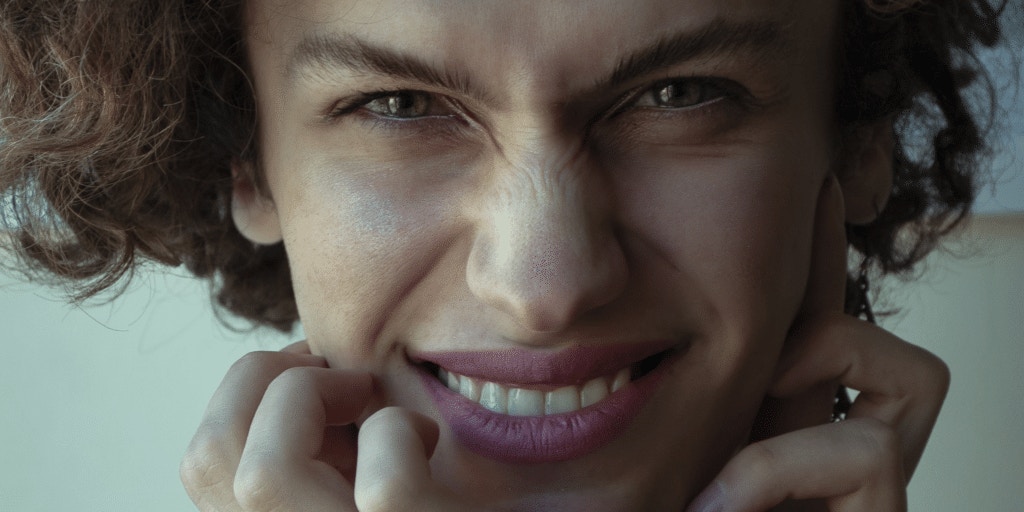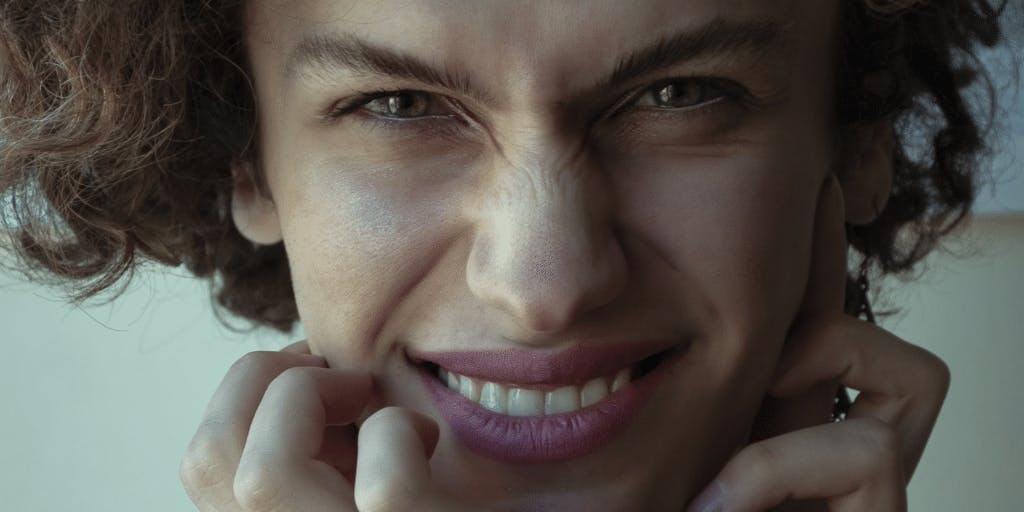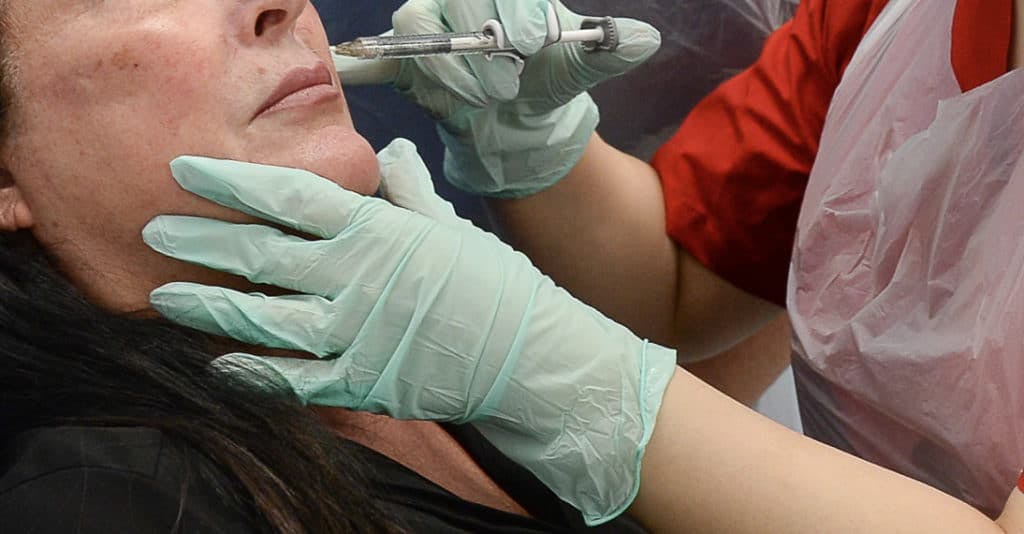Non-Surgical Facial Feminisation For Transgender Women

Facial feminisation is an important step for many male to female (MTF) transgender patients.
Having a more traditionally “feminine” look can play a vital role in helping trans women “pass” as female. By having their appearance reflect their gender or preferred gender presentation, you can help MTF patients on many levels.
Whilst surgical options do exist, they are often costly and involve significant downtime. This is why non-surgical facial feminisation for transgender patients is a popular choice. Additionally, surgery often has lengthy wait lists, so injectable medical aesthetics treatments can provide a speedier solution during this period.
Popular non-surgical facial feminisation treatments

There is no “correct” way to transition, it is an entirely individual experience. There is also no “one size fits all” approach when managing the feminisation process for trans women.
Knowledge of the anatomical differences between a female and male is key. Attention to a considerate consultation, discussing expectations and also perhaps transcending your own preconceptions of beauty, is also of paramount importance. This includes asking your patient for their preferred pronouns, too – always ask and never assume!
Managing these cases really allows you to connect with your artistic skills. Here we outline some key information for injectors looking to offer injectable facial feminisation solutions to their MTF patients.
Facial shape
It’s always useful to first consider facial shape as a whole. For instance, the traditional “feminine” heart shaped, full face versus the more sharp, square shape and hollowed appearance associated with men; the female face often involves smooth curves rather than the angular features of the male.
Considering proportions is also helpful, for instance, the bizygomatic distance is wider than the bigonial distance in females, and more equal in males. Cis men have a more exaggerated mass in the lower face, whilst with cis females, volume is concentrated in the mid-face.
Once you have considered the facial shape, you can plot your treatment plan for specific regions of the face.
Jawline and chin fillers to create more feminine facial contours
In our society a wide, square jaw is seen as being traditionally masculine, whereas a softer, pointier chin is considered to be more feminine. As such, treating the jawline and chin plays a large part in helping a masculine-looking face appear more feminine – although bear in mind that some of the world’s “most beautiful” women, like Angelina Jolie and Salma Hayek have quite masculine jawlines by this definition!
The best approach for using soft tissue filler to create a more feminine jawline involves:
– building a rounder chin within the medial intercanthal distance
– softening the jawline.
Botulinum toxin can also be used to reduce the masseter bulk to narrow the jawline.
If this is an area you’d like help with, to really refine your technique and get more experience under your belt, consider our 1:1 Training in Jawline and Lower Face.

Cheek filler to provide lift and balance in the mid-face
Mid-face treatments can add definition to the cheeks as well as help lift this area, creating more “feminine” contours. This is especially true when considered in combination with the jawline.
Cheek filler can be placed deep in the medial cheek to give the patient more rounded, forward projecting “apple” cheeks. This also supports the under eye region as the first step to managing the tear trough area.
This can help give the patient’s face a rejuvenated, fresh look – something also typically seen as desirable in a woman’s appearance.
Lip fillers for a fuller, more feminine lip shape
Lip fillers can enhance the patient’s natural lip shape and, when placed carefully, can create a more feminine contour without looking overdone.
This type of lip augmentation involves creating volume in the middle medial intercanthal distance and reducing the distance between the nose base and upper lip. Subtle exaggeration of the cupid’s bow and philtrum columns will also feminise lip appearance.
Botulinum toxin treatments to smooth and lighten a heavy brow
Men who are not transgender tend to have a straight forehead and heavy brow. As such, treatments for smoothing and lifting a heavy brow can be beneficial to trans women. These include achieving an arched, higher brow with a more open eye aperture by manipulating the muscular action around the region using botox.
Forehead Filler
The female forehead is associated with a rounded more vertical appearance. Forehead filler is a more advanced procedure that can be used to manage the light and shadow of a masculine forehead, for instance, balancing frontal bossing typical of the male forehead.
Temple filler to help provide a youthful, feminine appearance
Never underestimate the power of temple filler in creating a more youthful appearance! This can also be used to restore – or create – volume in the temple area for a more feminine look. The goal is to soften the transition from temple hollows to the zygomatic region. It can also create some lift to the tail of the eyebrow using needle or cannula techniques.
Treating transgender patients is an area many aesthetics practitioners are nervous, or simply under-educated about. It is important to get to grips with this area of aesthetic medicine, however, as injectables can make an incredible difference to this cohort’s quality of life. They are also extremely rewarding treatments to administer as an aesthetics specialist so it’s a win-win situation! – DR TRISTAN MEHTA, EXECUTIVE CHAIRMAN OF HARLEY ACADEMY
Masculinising effects of ageing
Ironically, the cumulative effects of ageing create changes that masculinise female facial features over time. So the concepts of facial feminisation will also apply to your ageing female patients to counteract the effects of time.
“I often ask students to draw a ‘male face’ and a ‘female face’ using step-by-step drawing tutorials. It really helps embed the artistry and sculptural differences between these faces,” notes Harley Academy director of education, Dr Kalpna Pindolia.
Treating transgender aesthetics patients
Another aspect it is vital to understand when treating transgender patients is the language you use. We highly recommend reading our guide to Creating a Safe Space for LGBTQIA+ Patients as part of ensuring you have a respectful and understanding approach.
Once you have obtained your Level 7 Diploma in Botox and Dermal Fillers and move on to learning more advanced aesthetics techniques, there are additional treatments you may want to explore here. These include injectable hand treatments, neck filler and liquid rhinoplasty.
Whilst we only discuss non-surgical facial feminisation injectables here, holistic treatment plans often involve skincare, semi permanent makeup and hair treatments, too. As an aesthetics practitioner, you can have a profound impact on an individual’s quality of life, making these treatments so rewarding to provide.
Dr Tristan Mehta, executive chairman of Harley Academy, advises: “Treating transgender patients is an area many aesthetics practitioners are nervous, or simply under-educated about. It is important to get to grips with this area of aesthetic medicine, however, as injectables can make an incredible difference to this cohort’s quality of life. They are also extremely rewarding treatments to administer as an aesthetics specialist so it’s a win-win situation! I thoroughly recommend investigating this treatment area and learning as much as you can in order to refine your approach and provide a particularly worthwhile service to this underserved, and frequently misunderstood, community.”
Don’t forget, if you’d like to refer back to this article in future, you can do so easily by saving our post on this over on the Harley Academy Instagram account.
All information correct at the time of publication. Last fact-checked: 26 January 2023
Download our full prospectus
Browse all our injectables, dermal fillers and cosmetic dermatology courses in one document
By submitting this form, you agree to receive marketing about our products, events, promotions and exclusive content. Consent is not a condition of purchase, and no purchase is necessary. Message frequency varies. View our Privacy Policy and Terms & Conditions
Attend our FREE open evening
If you're not sure which course is right for you, let us help
Join us online or in-person at our free open evening to learn more
Our Partners














STAY INFORMED
Sign up to receive industry news, careers advice, special offers and information on Harley Academy courses and services

